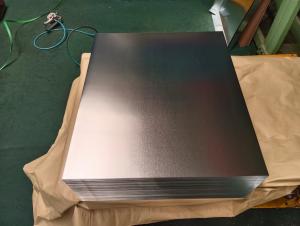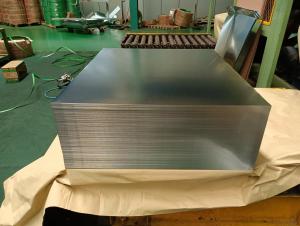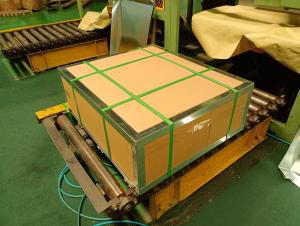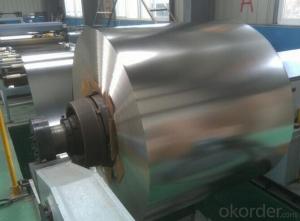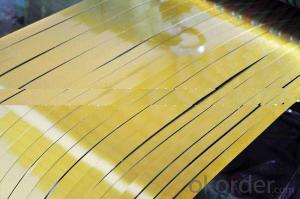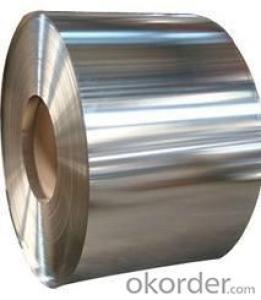Tinplate Sheets Prime Electrolytic Tinplate
- Loading Port:
- China main port
- Payment Terms:
- TT or LC
- Min Order Qty:
- 25 m.t.
- Supply Capability:
- 20000 m.t./month
OKorder Service Pledge
OKorder Financial Service
You Might Also Like
Item specifice
Product Description:
1.Structure of Tinplate Description
Electrolytic Tin Plate Coils and Sheets for Foods Metal Packaging, is one thin steel sheet with a coating of tin applied by electrolytic deposition. Tinplate made by this process is essentially a sandwich in which the central core is strip steel. This core is cleaned in a pickling solution and then fed through tanks containing electrolyte, where tin is deposited on both sides. As the strip passes between high-frequency electric induction coils, it is heated so that the tin coating melts and flows to form a lustrous coat.
2.Main Features of the Tinplate
Appearance – Electrolytic Tin Plate is characterized by its beautiful metallic luster. Products with various kinds of surface roughness are produced by selecting the surface finish of the substrate steel sheet.
Paintability and printability – Electrolytic Tin Plates have excellent paintability and printability. Printing is beautifully finished using various lacquers and inks.
Formability and strength – Electrolytic Tin Plates have got very good formability and strength. By selecting a proper temper grade, appropriate formability is obtained for different applications as well as the required strength after forming.
Corrosion resistance – Tinplate has got good corrosion resistance. By selecting a proper coating weight, appropriate corrosion resistance is obtained against container contents. Coated items should meet 24 hour 5 % salt spray requirement.
Solderability and weldability – Electrolytic Tin Plates can be joined both by soldering or welding. These properties of tinplate are used for making various types of cans.
Hygienic – Tin coating provides good and non toxic barrier properties to protect food products from impurities, bacteria, moisture, light and odours.
Safe – Tinplate being low weight and high strength makes food cans easy to ship and transport.
Eco friendly – Tinplate offers 100 % recyclability.
Tin is not good for low temperature applications since it changes structure and loses adhesion when exposed to temperatures below – 40 deg C.


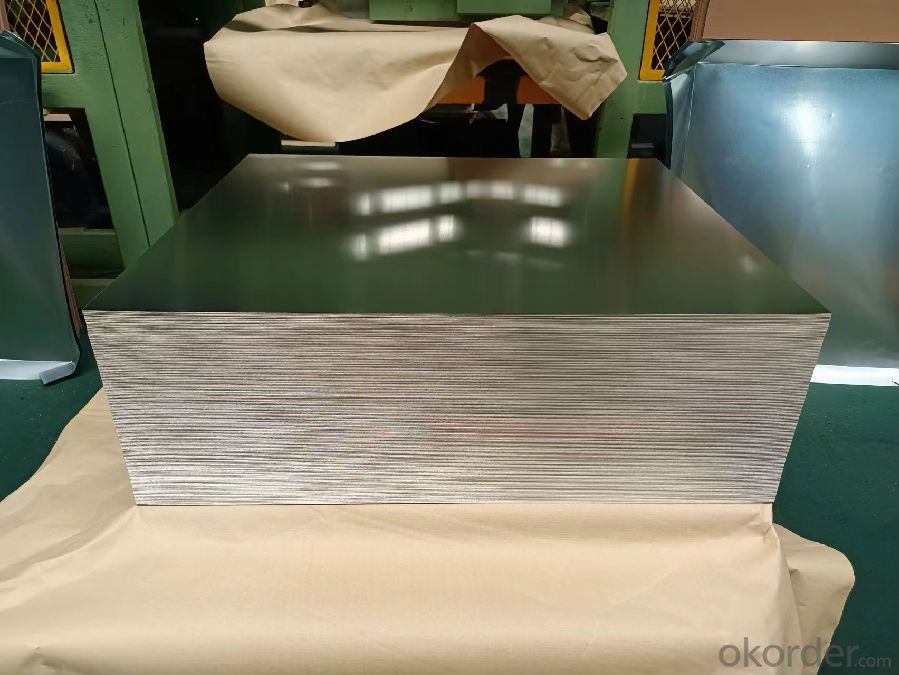
- Q:How is tin coating applied to the steel substrate?
- Tin coating is typically applied to the steel substrate through a process called electroplating. In this method, the steel substrate is first cleaned and prepared to ensure proper adhesion of the tin coating. It is then immersed in an electrolyte bath containing tin salts, and an electrical current is applied. The current causes the tin ions to be reduced and deposited onto the steel surface, forming a thin layer of tin coating. This electroplating process helps to improve the corrosion resistance and appearance of the steel substrate.
- Q:What are the advantages of using tinplate for construction materials?
- One of the advantages of using tinplate for construction materials is its durability. Tinplate is known for its exceptional strength and resistance to corrosion, making it suitable for various construction applications. Additionally, tinplate is lightweight, which allows for easier handling and installation. Furthermore, tinplate offers excellent aesthetic appeal, as it can be easily painted or decorated to match any desired design. Overall, tinplate's durability, lightweight nature, and aesthetic versatility make it a favorable choice for construction materials.
- Q:How do you solve the water stains on the tinplate?
- Feel the basin soil, if the surface is still felt humidity, can pinch the water, then it is necessary to take out the whole plant, breathable, basin soil slightly dry and then put back, half Yin conservation.
- Q:Can tinplate be used for agricultural applications?
- Yes, tinplate can be used for agricultural applications. It is commonly used for packaging agricultural products such as canned food, beverages, and other perishable goods. Tinplate provides a protective barrier against moisture, air, and light, ensuring the quality and longevity of agricultural products. Additionally, it is durable, recyclable, and resistant to corrosion, making it suitable for various agricultural needs, including storage containers, equipment, and agricultural machinery components.
- Q:How does tinplate affect the environment?
- Tinplate can have both positive and negative impacts on the environment. On one hand, tinplate is a highly sustainable packaging material as it is 100% recyclable and can be reused multiple times without losing its properties. This helps in reducing waste and conserving resources. Additionally, tinplate containers offer excellent protection to the contents, preventing food spoilage and reducing the overall carbon footprint associated with food wastage. However, the production of tinplate involves mining and extracting tin, which can have adverse effects on the environment. Mining activities can lead to habitat destruction, soil erosion, and contamination of water sources if not properly managed. Furthermore, the manufacturing process of tinplate involves energy-intensive procedures, emitting greenhouse gases and contributing to climate change. To mitigate these negative impacts, it is crucial to promote responsible mining practices, prioritize energy-efficient manufacturing techniques, and encourage recycling and reuse of tinplate to minimize its environmental footprint.
- Q:What are the main challenges in the tinplate industry?
- The main challenges in the tinplate industry include fluctuating raw material prices, increasing competition from alternative packaging materials, environmental concerns related to tin coating and waste management, and the need for continuous technological advancements to meet evolving customer demands. Additionally, market volatility, trade barriers, and regulatory compliance are also key challenges faced by the tinplate industry.
- Q:Can tinplate be reused?
- Yes, tinplate can be reused. It is a highly recyclable material that can be melted down and reprocessed to create new tinplate products.
- Q:What is tin plate?
- Tinplate is made of iron tin alloy and tin is plated. Mainly used in food packaging, tin cans production, because the tin steel strength and formability and corrosion resistance of tin soldering, and beautiful appearance with a material, corrosion resistant, non-toxic, high strength and good ductility properties.
- Q:How does tinplate perform in terms of product protection?
- Tinplate performs exceptionally well in terms of product protection. Its unique properties, including corrosion resistance and durability, make it an ideal choice for packaging solutions. Tinplate provides a reliable barrier against moisture, light, and air, effectively preserving the quality and freshness of the product. Additionally, its strength and rigidity offer excellent physical protection, safeguarding the contents from external impacts during handling and transportation. Overall, tinplate ensures optimal product protection, extending shelf life and enhancing customer satisfaction.
- Q:How does tinplate packaging contribute to product marketing?
- Tinplate packaging contributes to product marketing by enhancing the visual appeal and attractiveness of the product. Its glossy finish and vibrant colors make it stand out on the shelves, attracting the attention of potential consumers. Additionally, tinplate packaging can be customized with unique designs and logos, which helps in establishing brand identity and recognition. Furthermore, the durability and protective properties of tinplate packaging ensure that the product remains intact and in good condition, which further enhances consumer perception and trust in the brand.
1. Manufacturer Overview |
|
|---|---|
| Location | |
| Year Established | |
| Annual Output Value | |
| Main Markets | |
| Company Certifications | |
2. Manufacturer Certificates |
|
|---|---|
| a) Certification Name | |
| Range | |
| Reference | |
| Validity Period | |
3. Manufacturer Capability |
|
|---|---|
| a)Trade Capacity | |
| Nearest Port | |
| Export Percentage | |
| No.of Employees in Trade Department | |
| Language Spoken: | |
| b)Factory Information | |
| Factory Size: | |
| No. of Production Lines | |
| Contract Manufacturing | |
| Product Price Range | |
Send your message to us
Tinplate Sheets Prime Electrolytic Tinplate
- Loading Port:
- China main port
- Payment Terms:
- TT or LC
- Min Order Qty:
- 25 m.t.
- Supply Capability:
- 20000 m.t./month
OKorder Service Pledge
OKorder Financial Service
Similar products
New products
Hot products
Hot Searches
Related keywords
